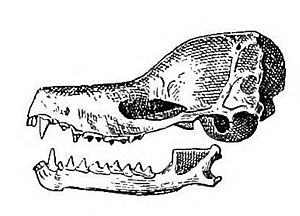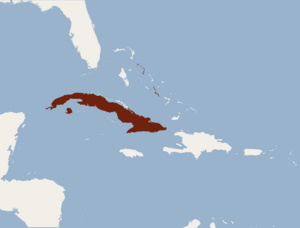Gervais's funnel-eared bat facts for kids
Quick facts for kids Gervais's funnel-eared bat |
|
|---|---|
 |
|
| Conservation status | |
| Scientific classification | |
| Genus: |
Nyctiellus
|
| Species: |
lepidus
|
 |
|
| Synonyms | |
|
Natalus lepidus (Gervais, 1837) |
|
The Gervais's funnel-eared bat (Nyctiellus lepidus) is a small and unique bat species. It belongs to the Natalidae family, often called "funnel-eared bats" because of their special ear shape. This bat is the only species in its genus called Nyctiellus. This means it's very special and doesn't have any close relatives in its group. You can find these interesting bats living in the Bahamas and Cuba.
Contents
What is a Funnel-Eared Bat?
Funnel-eared bats get their name from their large, funnel-shaped ears. These ears help them hear very well. They use their excellent hearing to find insects in the dark. These bats are usually quite small. They have long, slender wings that help them fly quickly and gracefully.
Where Does It Live?
Gervais's funnel-eared bats live in warm, tropical places. Their main homes are the islands of the Bahamas and Cuba. They often live in caves, which provide a safe and cool place to rest during the day. Caves also protect them from predators and bad weather. These bats prefer humid environments.
What Do They Eat?
Like most bats, Gervais's funnel-eared bats are insectivores. This means they eat insects. They fly out at night to hunt for moths, beetles, and other small flying insects. They use echolocation to find their prey. Echolocation is like a natural sonar system. The bats send out high-pitched sounds. They then listen for the echoes that bounce back from objects, including their food. This helps them "see" in the dark.
Conservation Status
The Gervais's funnel-eared bat is currently listed as "Least Concern" by the International Union for Conservation of Nature (IUCN). This means that its population is stable. It is not facing a high risk of extinction right now. However, it's always important to protect their habitats. Protecting caves and natural areas helps these unique bats continue to thrive.
Images for kids
See also
 In Spanish: Murciélago oreja embudo de Gervais para niños
In Spanish: Murciélago oreja embudo de Gervais para niños




